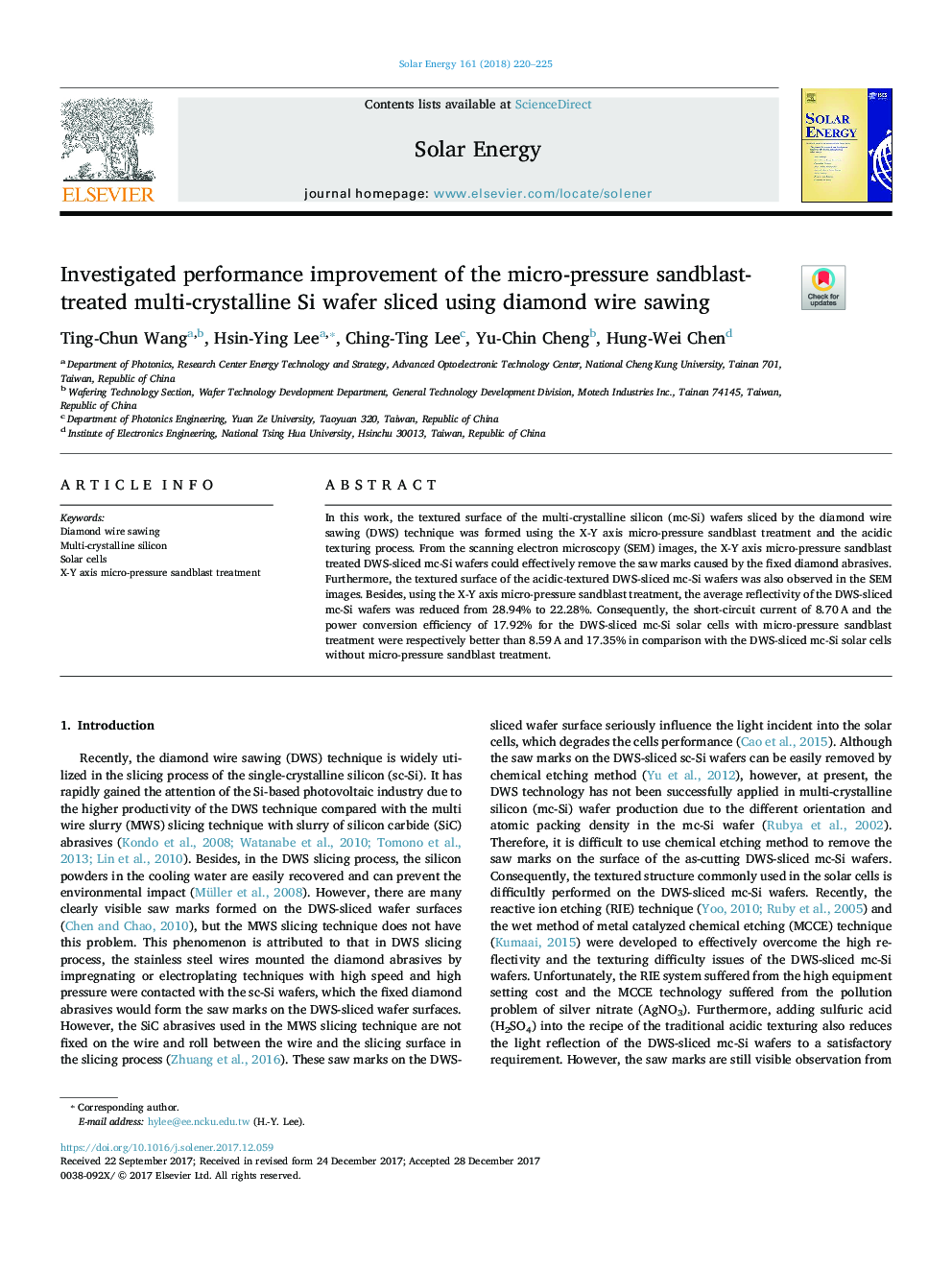| Article ID | Journal | Published Year | Pages | File Type |
|---|---|---|---|---|
| 7935768 | Solar Energy | 2018 | 6 Pages |
Abstract
In this work, the textured surface of the multi-crystalline silicon (mc-Si) wafers sliced by the diamond wire sawing (DWS) technique was formed using the X-Y axis micro-pressure sandblast treatment and the acidic texturing process. From the scanning electron microscopy (SEM) images, the X-Y axis micro-pressure sandblast treated DWS-sliced mc-Si wafers could effectively remove the saw marks caused by the fixed diamond abrasives. Furthermore, the textured surface of the acidic-textured DWS-sliced mc-Si wafers was also observed in the SEM images. Besides, using the X-Y axis micro-pressure sandblast treatment, the average reflectivity of the DWS-sliced mc-Si wafers was reduced from 28.94% to 22.28%. Consequently, the short-circuit current of 8.70â¯A and the power conversion efficiency of 17.92% for the DWS-sliced mc-Si solar cells with micro-pressure sandblast treatment were respectively better than 8.59â¯A and 17.35% in comparison with the DWS-sliced mc-Si solar cells without micro-pressure sandblast treatment.
Related Topics
Physical Sciences and Engineering
Energy
Renewable Energy, Sustainability and the Environment
Authors
Ting-Chun Wang, Hsin-Ying Lee, Ching-Ting Lee, Yu-Chin Cheng, Hung-Wei Chen,
